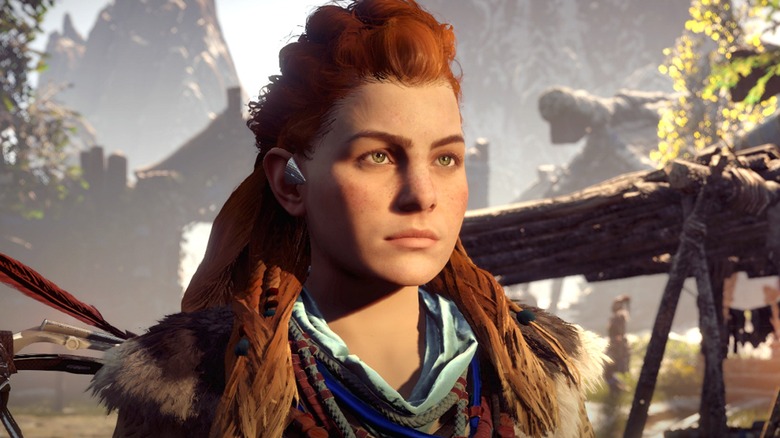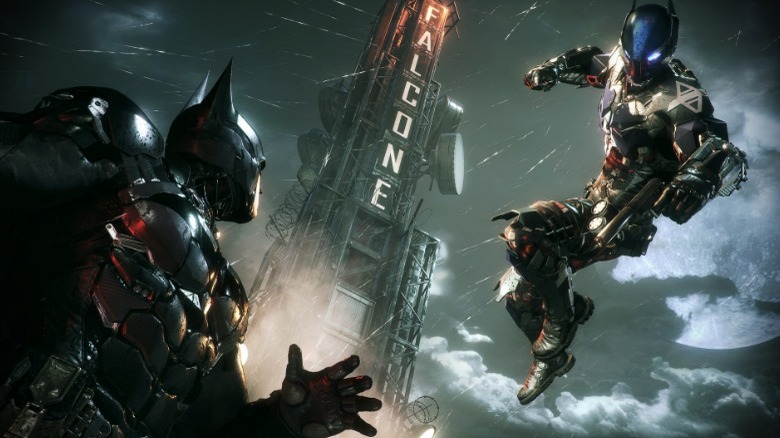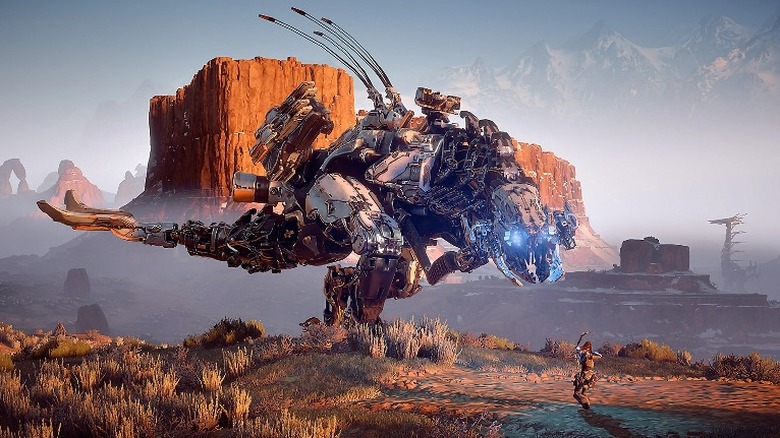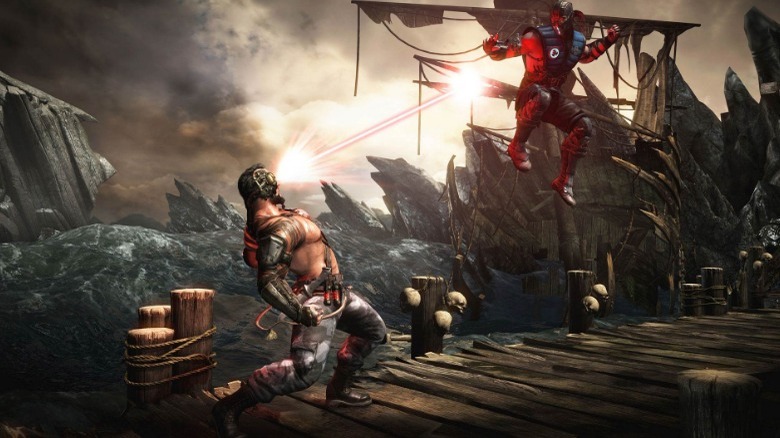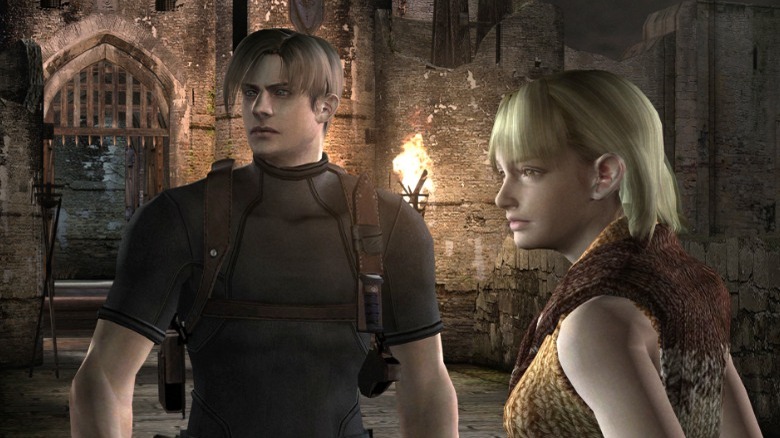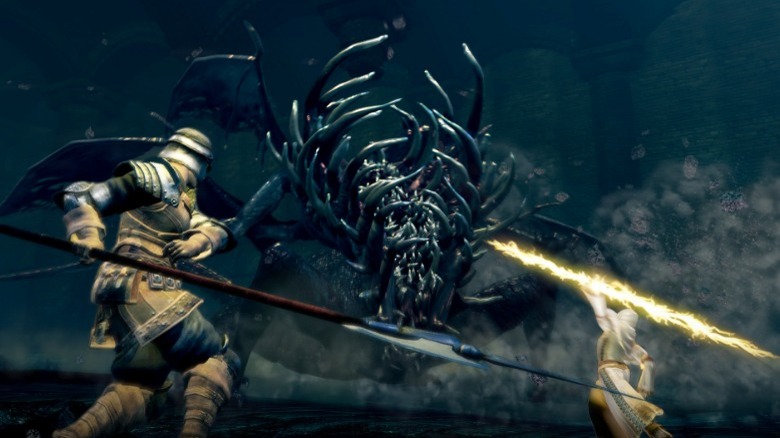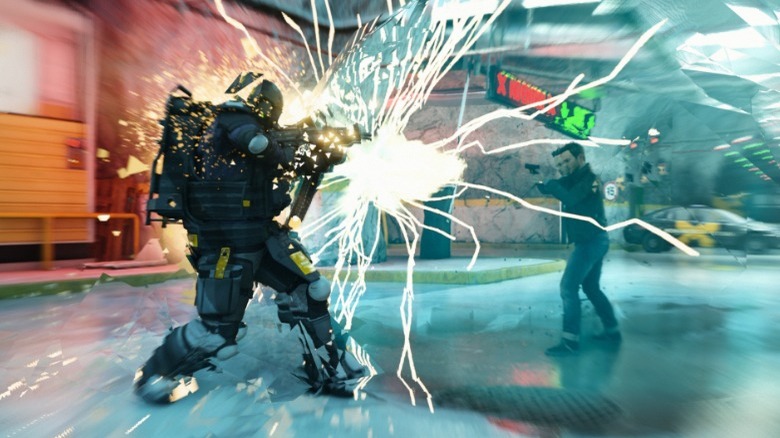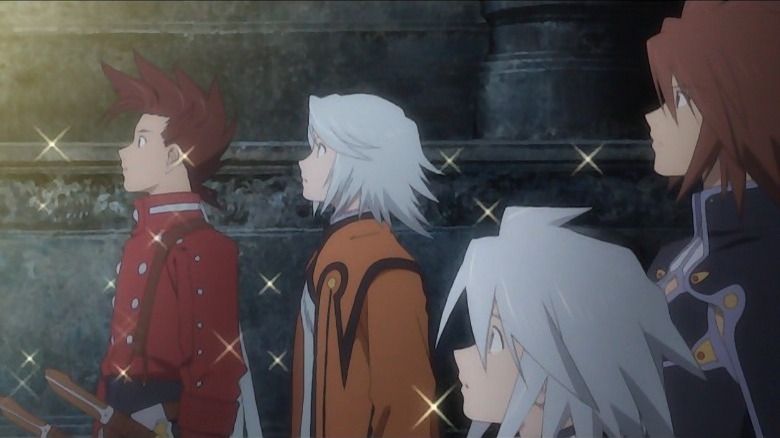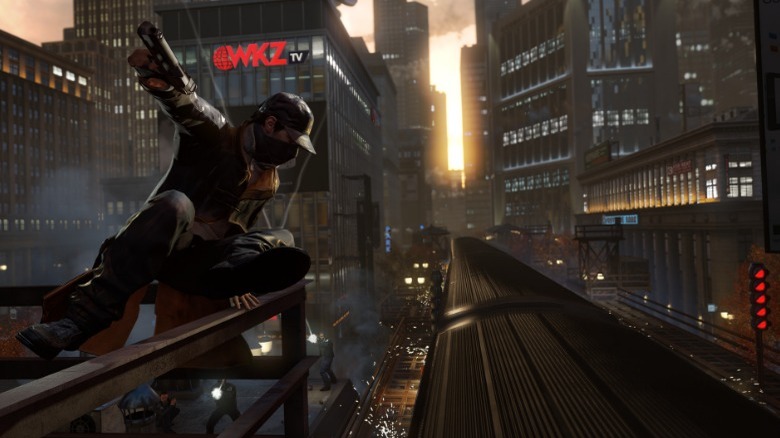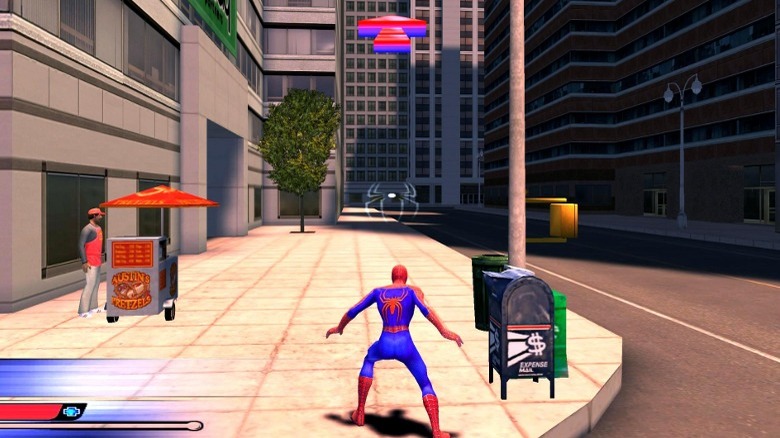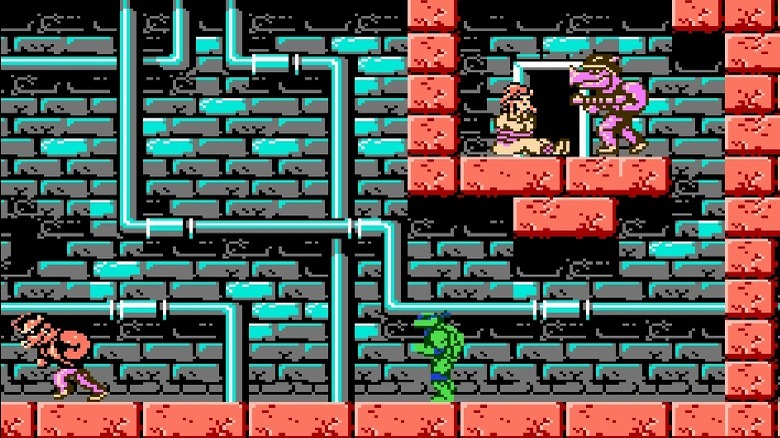10 Worst Video Game PC Ports Of All Time
Sometimes, the video game industry seems cyclical. Publishers and developers make mistakes, learn from their mistakes, and then make the same mistakes all over again. This trend has steered the industry since its creation, for better or worse, and right now the worse portion of this pattern has taken the form of terrible PC ports.
Take the long-awaited PC version of "The Last of Us Part 1." Regardless of what you think of its sequel, the first "The Last of Us" is a blockbuster experience, and desktop gamers have been anticipating it ever since Sony started shipping erstwhile PlayStation exclusives to PC. Unfortunately, the PC version of "The Last of Us" is a buggy laughing stock, and it's not the only one. "Wild Hearts" and "Wo Long: Fallen Dynasty" also received sub-par PC ports, and now audiences are skeptical of any game coming to PC.
Still, all things considered, these PC renditions aren't that bad. They may feel a bit insulting, but gamers have seen way worse. Remember when PC ports crashed constantly? Or when their control schemes cramped hands? What about when PC ports were literally unbeatable? Compared to those, "The Last of Us Part 1" on PC is downright flawless. Here are some of the worst PC ports you might have forgotten about. While we could claim gamers are better off not remembering these titles, you know what they say about those who don't learn from history.
Batman: Arkham Knight
The "Batman: Arkham" franchise needs no introduction. The series demonstrated that studios could develop quality video games based on comic book characters, and the second entry in the series, "Batman: Arkham City," is widely regarded as one of the best comic book video games ever made. Hopes were high for the third entry, "Batman: Arkham Knight" (not counting "Batman: Arkham Origins"), but audiences were disappointed the game didn't live up to the legacy of "Arkham City" — and that's just the console version.
When "Batman: Arkham Knight" was released on PC, the game was broken and unstable. Players suffered unreliable frame rates, physics issues, memory leaks, and constant crashes. Even summoning the Batmobile — the big new feature for "Arkham Knight" — was a flip of Two-Face's coin. Heads, the game crashed. Tails, the game crashed so hard you had to restart your PC.
Apparently, developers at Rocksteady Studios knew "Batman: Arkham Knight" on PC was busted months before release. The game is perfectly playable now, but the port was so bad that it became a breaking point for many gamers. Warner Bros. pulled "Batman: Arkham Knight" from Steam shelves and re-released it several months later with a new patch.
Horizon Zero Dawn
"Horizon Zero Dawn" was a fresh start for developer Guerrilla Games after the lackluster "Killzone" franchise. Audiences loved "Horizon Zero Dawn" and its unique post-apocalyptic world filled with tribal humans and robot animals, although nobody expected Sony would use the game to jumpstart a trend of porting PlayStation exclusives to PC. Of course, nobody expected Sony to start with such a shoddy port, either.
While some players were able to get "Horizon Zero Dawn" running on their PCs without any problems, many more got a front-row seat to a myriad of technical issues. The game crashed constantly, and frame rates were all over the place. We don't just mean "Horizon Zero Dawn" couldn't keep a steady 30 FPS — we mean different assets played at different frame speeds. For instance, regardless of cutscene frame rates, facial animations always played at 30 FPS. These mismatched speeds made characters look like stop-motion puppets.
The most confusing issue was resolution. The gold standard for crisp graphics is 4K gaming and to be fair, "Horizon Zero Dawn" was rendered at 4K at launch. However, reviewers noticed that the game downscaled the output before upscaling that result to 4K and then delivering a Frankensteind image to the screen. In 2021, "Horizon Zero Dawn" on PC was finally fixed, but the game should never have been released in the state it was.
Mortal Kombat X
As of late, the "Mortal Kombat" games have featured surprisingly decent — if not great — campaigns, but the meat of the experience has been multiplayer. You can fight a friend while you both sit on the same couch, but online competitive matches have become more popular than ever. Unfortunately, without the proper netcode, online matches lack a spine.
When "Mortal Kombat X" launched, the game received mostly good reviews. However, its netcode wasn't good, even on consoles. Still, for all the console version's problems, the PC had it worse. Online matches were notoriously unstable, and the game suffered from issues unique to the platform, including crashes due to memory leaks. The developers at NetherRealm Studio tried to fix "Mortal Kombat X" on PC, although fans on Reddit reported continued problems. Eventually, the developers moved on to their next game. No, not "Mortal Kombat 11" — "Mortal Kombat XL."
To be fair, "Mortal Kombat XL" included all of the previously DLC-only characters, and the upgrade improved both gameplay as well as the underlying netcode. However, to take advantage of these improvements, players had to buy the game separately. To add salt to this gaping wound, the developers didn't originally plan to release "Mortal Kombat XL" on PC. NetherRealm changed their minds eventually, but if they hadn't, they would have left PC players with an inferior game with fewer characters and worse netcode.
Resident Evil 4
Nobody can understate the importance of "Resident Evil 4." The game revolutionized the action-horror genre and today tons of gamers are enjoying the "Resident Evil 4" remake on a variety of platforms, PC included. However, Capcom's first steps towards placing "Resident Evil 4" on PC created a different kind of horror.
Originally, "Resident Evil 4" was released on the Nintendo Gamecube as part of a deal to develop five games for the console. Capcom eventually ported the game to PlayStation 2 and used that version to produce a PC rendition, but even the PS2 port is superior to that first attempt. The PC port looked bland and lacked many atmospheric accentuators like fog and shadows. Moreover, the game's frame rate was choppy at best, but issues dug far deeper than the surface. For whatever reason, mice weren't supported at launch and were only added thanks to fan-made mods. Beyond that, many existing USB controllers weren't supported either. These oversights left keyboards as the only viable control options, but button prompts and key binds were unorthodox at best and uncomfortable at worst.
Thankfully, that lackluster "Resident Evil 4" PC port has been supplanted by the "Resident Evil 4 Ultimate HD Edition," which is arguably the best way to play the original game. This version boasts 60 FPS, better resolutions, and proper support for more controllers as well as a traditional keyboard and mouse combination.
Dark Souls: Prepare to Die Edition
FromSoftware seemingly learned a lesson from the limited PlayStation 3 release of "Demon's Souls" and expanded the platform scope for "Dark Souls." That game was initially released on PlayStation 3 and Xbox 360 before eventually finding its way to PC. Unfortunately, FromSoftware had never coded a PC game before, and it shows.
"Dark Souls: Prepare to Die Edition" was the culmination of inexperience and a rushed schedule. This version was supposed to bring "Dark Souls" to the PC and add new content. In that respect, it succeeded. In every other respect, the game failed. The PC port sported atrocious keybindings and mouse support, to the point where players were essentially forced to use a controller. Moreover, "Dark Souls: Prepare to Die Edition" lacked standard graphical options. The game didn't properly support resolutions higher than 720p, and despite those limitations, the port still couldn't hold a steady frame rate. However, the worst crime "Dark Souls: Prepare to Die Edition" committed was its reliance on the controversial Games for Windows Live.
The outcry against "Dark Souls: Prepare to Die Edition" was so great that FromSoftware promised its next game would be developed with PC players in mind. Say what you will about "Dark Souls 2" — at least it works on PC. We had to wait for another studio, QLOC, to remaster "Dark Souls" before we received a quality PC port.
Quantum Break
After the success of "Alan Wake," Microsoft partnered with Remedy Entertainment to produce a new IP, which eventually became "Quantum Break." The game was initially developed exclusively for Xbox One, but a Windows 10 version was added before launch. This change in plans might explain why the Xbox One version is much more polished.
Many of the PC port's issues likely stemmed from the design of "Quantum Break." Levels and environmental hazards are supposed to fold in on themselves due to time dilation shenanigans, an effect that worked well on Xbox but not on PC. The game had trouble loading on any drive that wasn't an SSD, and many graphics cards couldn't handle the strain, which resulted in frequent crashes. Even when "Quantum Break" worked on PC, the gameplay just wasn't as fluid as the Xbox version.
Not all of the PC port's problems were under the hood. For some inexplicable reason, the game was released without a quit button. However, the game's arguably worst quality was its first impression. Many gamers felt betrayed that "Quantum Break" would launch on the Windows Store (which itself was controversial at the time) and not serve as an Xbox One exclusive. To make matters worse, the PC version required Windows 10 and DirectX 12, which were relatively new and unstable at the time. At least the game eventually made its way over to the slightly-less contentious Steam.
Tales of Symphonia
The most recent entries in Bandai Namco's "Tales" series have been released on multiple platforms, but not too long ago, each entry generally stuck to one console. Bandai Namco has attempted to relaunch older titles on newer platforms, but some attempts have fared better than others.
Bandai Namco's first PC port was "Tales of Symphonia," which is widely regarded as one of the series' best entries — at least on GameCube. The PC version, meanwhile, fell short of the original by a significant margin. Performance-wise, the PC version was extremely disappointing since the game was locked at 720p at 30 FPS and shipped with a DRM program that hamstrung performance even more. Even though the "Tales of Symphonia" PC port couldn't compete graphically with other games released around the same time, its load times blew them all out of the water – and we mean that in a bad way.
The PC version of "Tales of Symphonia" also shipped with some frankly baffling issues. Mouse and keyboard support was missing, save slots were limited, and localization was half-baked at best. Many tooltips and menu items were blank, and even when the language was set to French or German, some pieces of text were still in English. Since the port utilized an already completed game, gamers had to wonder how these mistakes were possible.
Watch Dogs
Even before being released, "Watch Dogs" was off to a bad start thanks to its involvement in the Ubisoft graphical downgrade controversy, but audiences were still confident the game would look and play best on PC. That wasn't the case.
Controls in "Watch Dogs" were fairly wonky on PCs. Anyone who used a controller was fine, but the keyboard and mouse controls were hampered by mouse acceleration. Mouse speed changed depending on the menu, which resulted in inconsistent controls. This issue was no more apparent than in the weapon wheel, which worked fine for joysticks but was a pain with mice. However, the game's worst problems lay in its graphics.
"Watch Dogs" was quite the looker for its time and still is, but it was poorly optimized. Regardless of the user's hardware, the game had trouble holding a steady frame rate at higher settings. Even more insulting, the developers hid graphics options that would let PC players push the game to match the initial trailer audiences fell in love with.
After tech-savvy players unearthed and tested these squirreled-away graphics options, they discovered these changes didn't negatively impact performance. The two leading theories are that Ubisoft either intentionally handicapped the PC version or that developers lacked time to get these better settings to work — which seems unlikely, given the aforementioned tests. The game's always online DRM didn't help performance issues, either.
Spider-Man 2
These days, when studios port games across different systems, they try to keep the experience the same, albeit less graphically intense to remain stable on weaker hardware. However, not too long ago, publishers were a little sneakier. Even if licensed games shared the same name and publisher, they would play like two completely different games on different systems and the quality of one didn't guarantee the quality of another.
"Spider-Man 2" was developed as a tie-in to the 2004 movie of the same name, and it is no coincidence that, like its cinematic counterpart, the "Spider-Man 2" game is considered a milestone in "Spider-Man" game design. This game lets audiences swing around New York City as Spidey, which became the blueprint for "Spider-Man" games going forward. This environmental freedom also gave developers their own freedom to add some new story beats, side missions, and combat systems that turned "Spider-Man 2" into a landmark experience. However, that's only in the console versions. How does the PC version fare? Poorly.
"Spider-Man 2" on PC is a step down in almost every regard. The graphics are blockier and animations are not as polished, but worst of all, the game is far more simplistic. Gone is the console's open world, replaced by linear sections that only let Spider-Man swing from dedicated anchor points. Combat devolved to a simple one-button affair, and the PC port has more bugs than a spider's web. The result is a demonstration of how not to design a game.
Teenage Mutant Ninja Turtles
When you think of bad PC ports, you probably imagine a game littered with visual flaws, glitches, performance issues, and countless crashes. Take those problems away, though, and you should still have a quality game. However, that is not always the case. Not only are some games bad regardless of version, but some PC ports also go beyond poor optimization.
The "Teenage Mutant Ninja Turtles" have been around for so long that one of their first games was released on the original Nintendo. The game is infamously difficult and poorly designed, but its PC port is so flawed that it is literally impossible to beat.
In level three of "Teenage Mutant Ninja Turtles," players have to jump over a gap with a low ceiling. This challenging moment is ironically one of the game's easier segments, but when the game was ported over to DOS, the developers shifted part of the level geometry slightly to the left. This seemingly innocuous change turned the already difficult jump into an impossible one, essentially soft-locking progress. The only way to get across is by using a built-in cheat to bypass the level entirely, making the PC port technically unbeatable.
